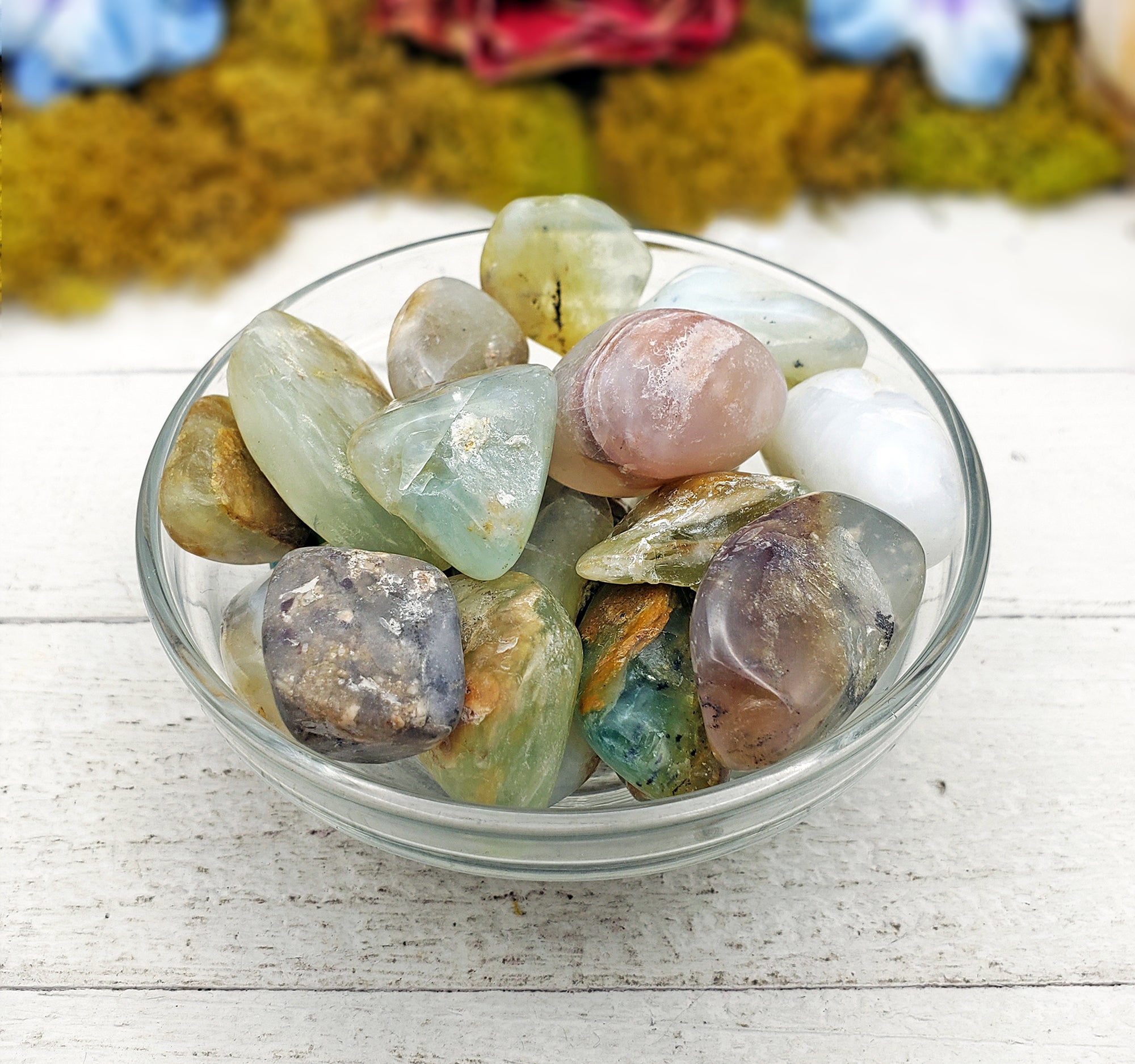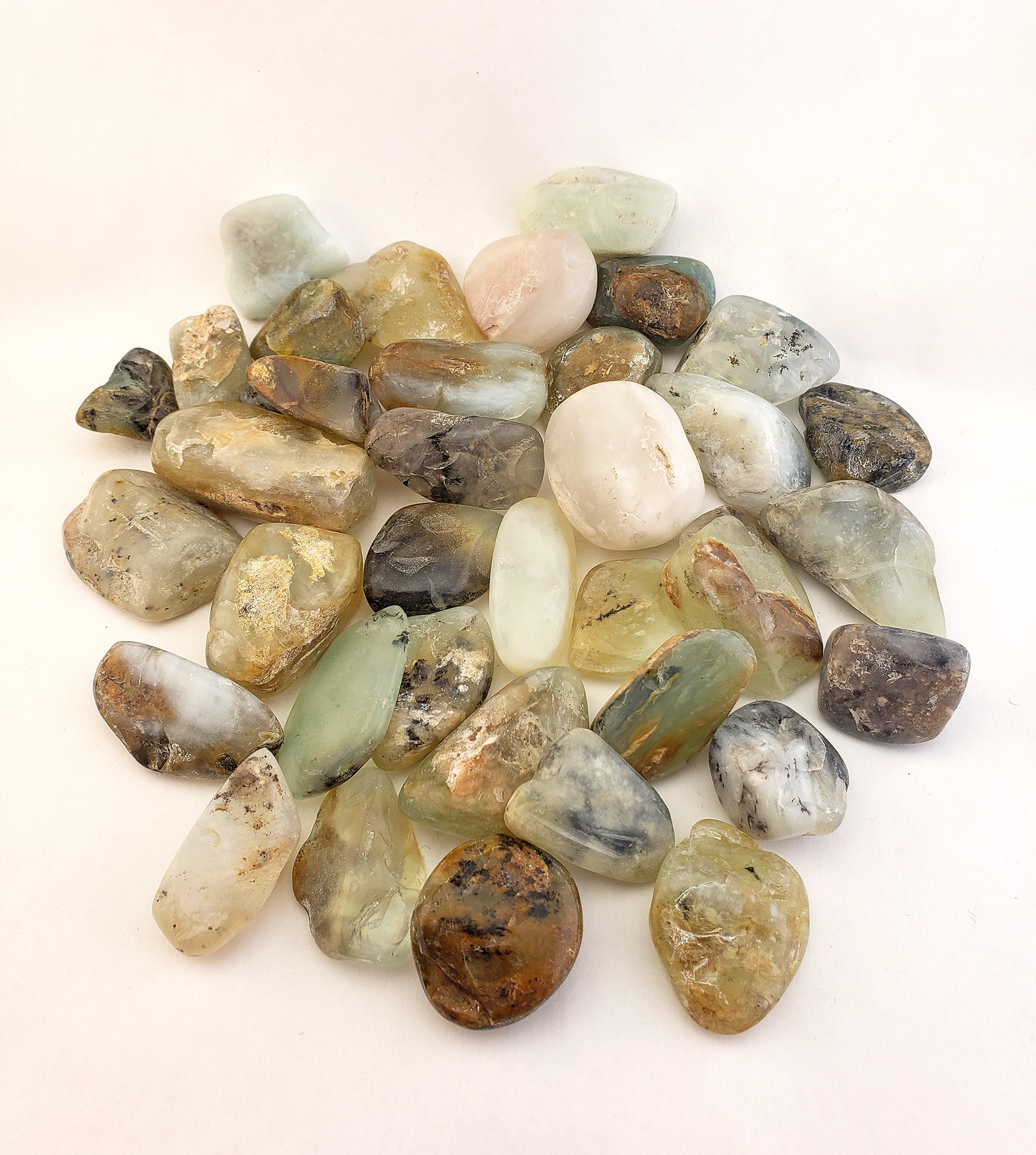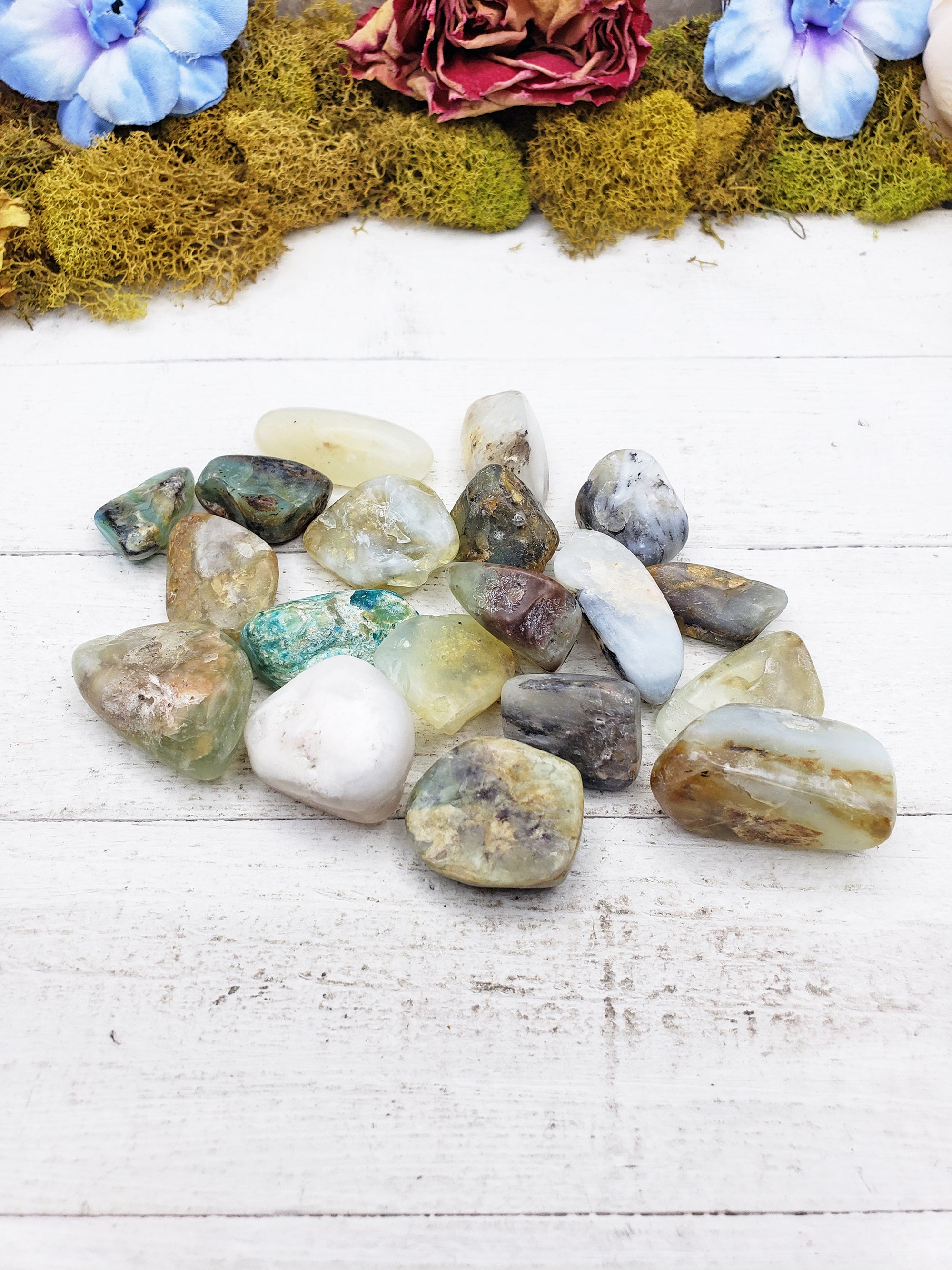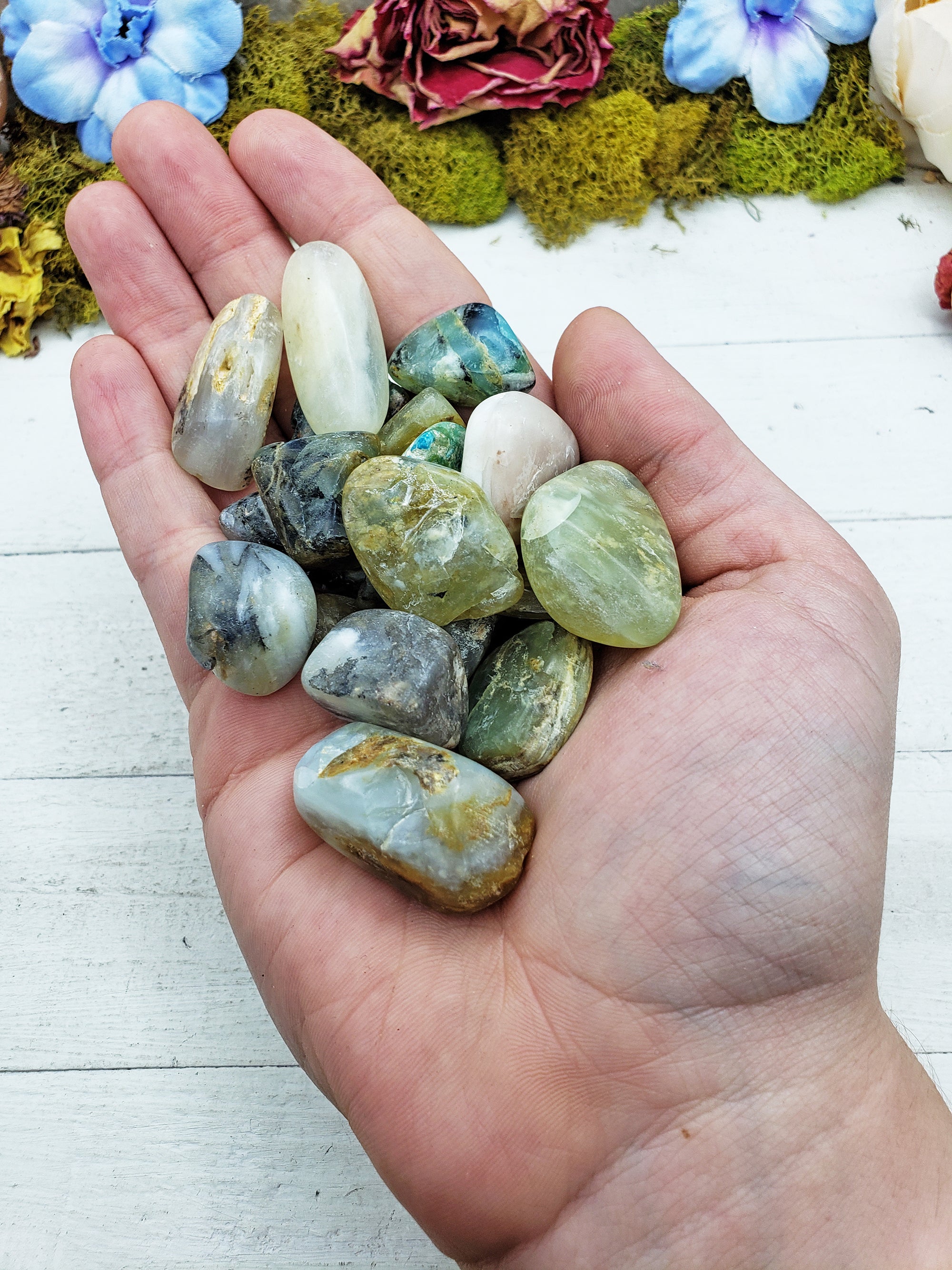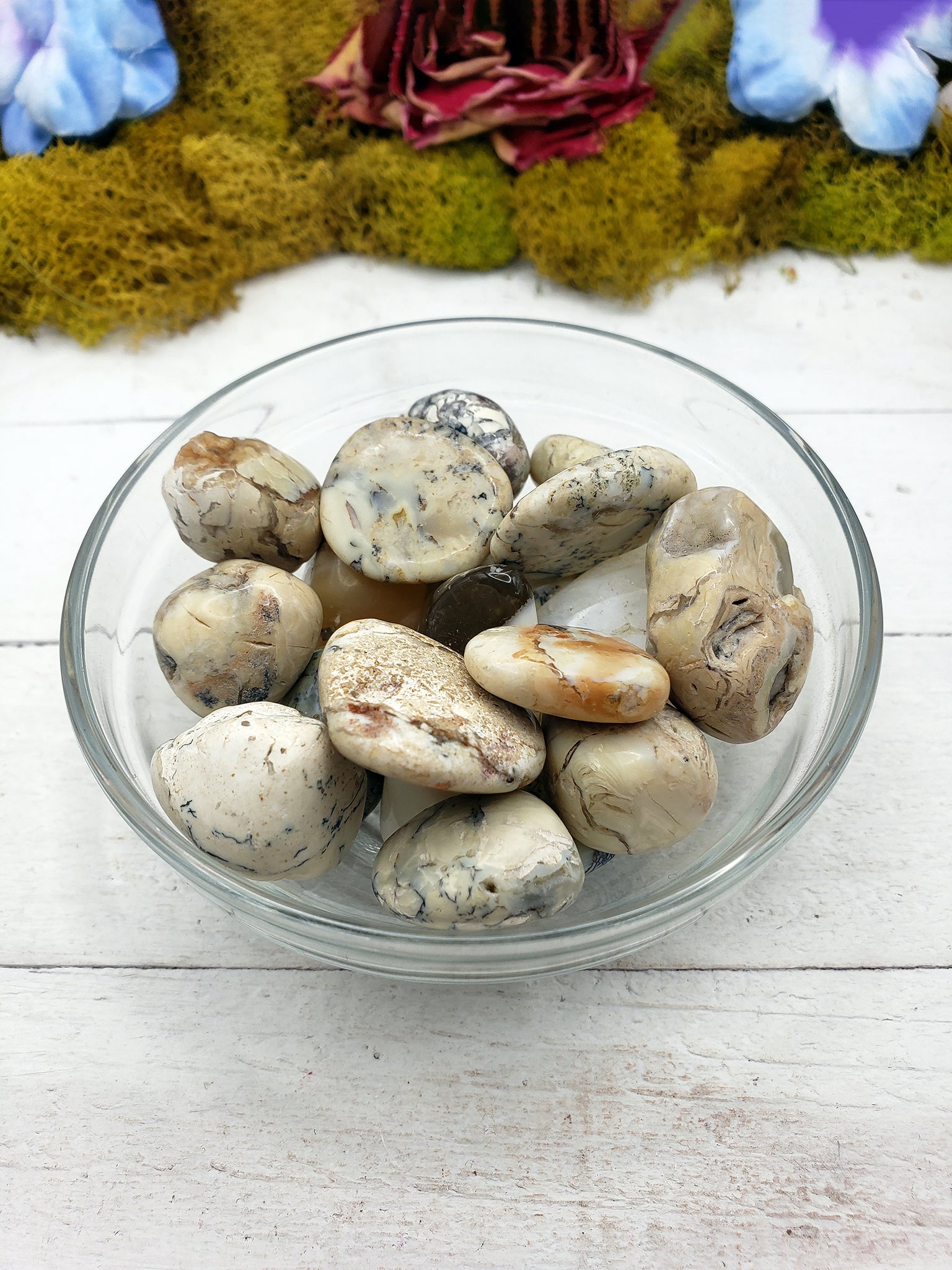What is Opal? Is Opal a Mineral?
There is some contention as to whether Opal is a mineral, although it was still referred to as a mineral species as late as 2007. Opal is now considered a mineraloid since it is an amorphous hydrated silica. Of these, Hydrophane Opals are the most absorbent, resulting in stark changes in appearance when exposed to liquids. Since Opal can also form pseudomorphs after organic material (such as wood, fossils, or bone) in addition to after minerals like Gypsum, Feldspar, and Calcite, Opal can be found in cracks and veins as well, resulting in striking formations like those seen in the Boulder Opals from Queensland, Australia. When Opal forms psuedomorphs after organic material, it often takes on the moniker of the material it replaced, resulting in Bone Opal, Shell Opal, and Opalized Wood (aka Opal Petrified Wood or Opalized Petrified Wood). Some types of Opal can be found in botryoidal and globular growths, like those common to Hyalite Opals, resulting in a charming, almost alien appearance.
Opal Meaning and Metaphysical Properties
The meaning of Opal can differ depending on its color, with White Opal being associated with Angelic guidance, restoration, and spiritual growth, while Green Opal is a stone of hope, connection with others, and motivation. Blue Opal is known as a crystal for reducing stress, maintaining focus, and enhancing creativity, while Red Opal is all about passion, self acceptance, and joy. Pink Opal is used for emotional healing, opening new opportunities, and resolving conflicts, while colorless Hyalite Opal is a gem of purity, intuition, and awareness. Despite their differences, all Opals are known for their supportive energy, encouraging us toward self empowerment, stability, and spiritual balance.
Are Opal and Opalite the Same?
Opalite was once a term used to describe Opal stones without fire, but more recently the name Opalite has been applied to a manmade variety of glass with a milky-rainbow hue. To avoid confusion, many collectors refer to fireless genuine Opal as "Common Opal," while opalescent genuine Opal is referred to as "Precious Opal." Manmade Opalite is not the same, as it does not occur in nature, and is typically made of glass or resin.
What Color is Opal?
It might be easier to ask, "What color isn't Opal?" There are many different types of Opal stones, with a variety of trade names given to denote their color, level of opalescence, or the locale in which they were found (for example: Australian Opals, Ethiopian Opals, Mexican Opals, Wello Opals, Lightning Ridge Opals, Cantera Opals, etc). Among these, Precious Opals (sometimes called Rainbow Opals) are widely considered the most desirable, due to their vibrant, flashy appearance and superior translucency. Precious Black Opals, which pair the vibrant shine of Precious Opal with a deep contrast of color, are especially rare and valuable. Fire Opals (aka Precious Red Opals), displaying the a rust-red to orange-brown coloration, gleam with sparkles of opalescence akin to fire, hence their name. There are Precious Pink Opals (aka Pink Fire Opal), Precious Blue Opals (aka Blue Fire Opal), Precious Green Opals (aka Green Fire Opal), Precious Purple Opals (aka Morado Opal), Precious White Opals (aka White Fire Opals), and many more varieties. Precious Opals are much beloved by jewelers, and are often turned into Opal rings or Opal pendants, to be used as birthstone jewelry for those born in October. Opal stones have also seen a resurgence in wedding rings, although care must be taken to prevent discoloration from contact with water, oils, lotions, or abrasive cleaning materials.
For every type of Precious Opal, there is a Common Opal as well: an Opal stone in the same color, but exhibiting no flash or opalescence. These Common Opals are typically semi-opaque to fully opaque, with a somewhat waxy texture. Common White Opal (sometimes called Milk Opal) is the most well known of these, although Common Pink Opal, Common Blue Opal, Common Green Opal, and Common Red Opal have devoted fans of their own. Common Opals are often turned into tumbled stones, crystal towers, or gemstone wands, and have captured the hearts of crystal collectors for many years. Hyalite Opal, a mostly colorless Opal variety sometimes referred to as Water Opal, is technically a Common Opal type as well, since it doesn't display opalescence.
How Much is Opal Worth?
There are many, many factors to consider when talking about the worth of Opals. For example, the intensity of opalescence, the translucency of the stone, the variety and color of the gem, its rate of inclusion, its size and weight, and of course where it was mined. Since some forms of Opal are much rarer than others, this is always a factor when discussing the worth of the stone.




